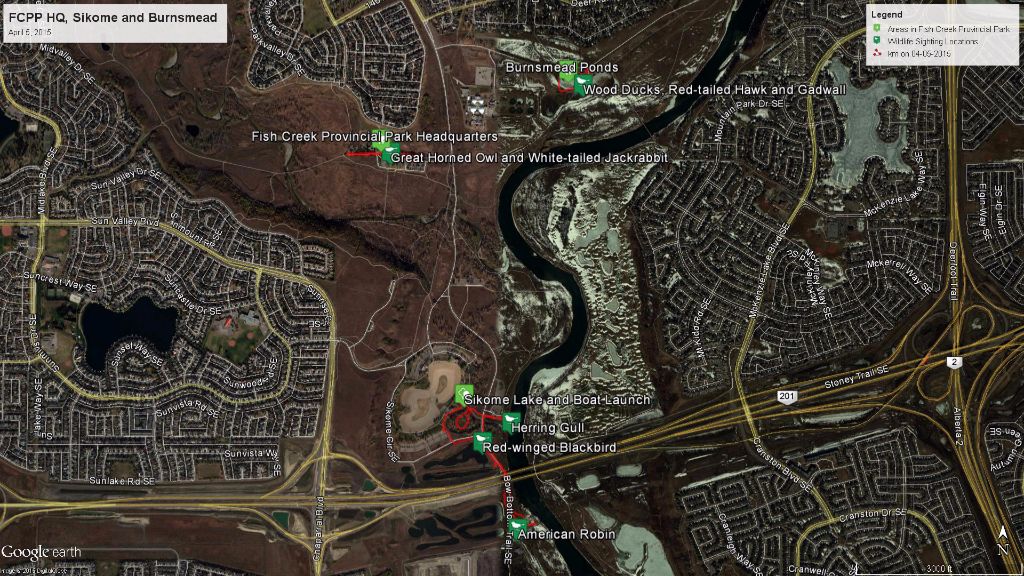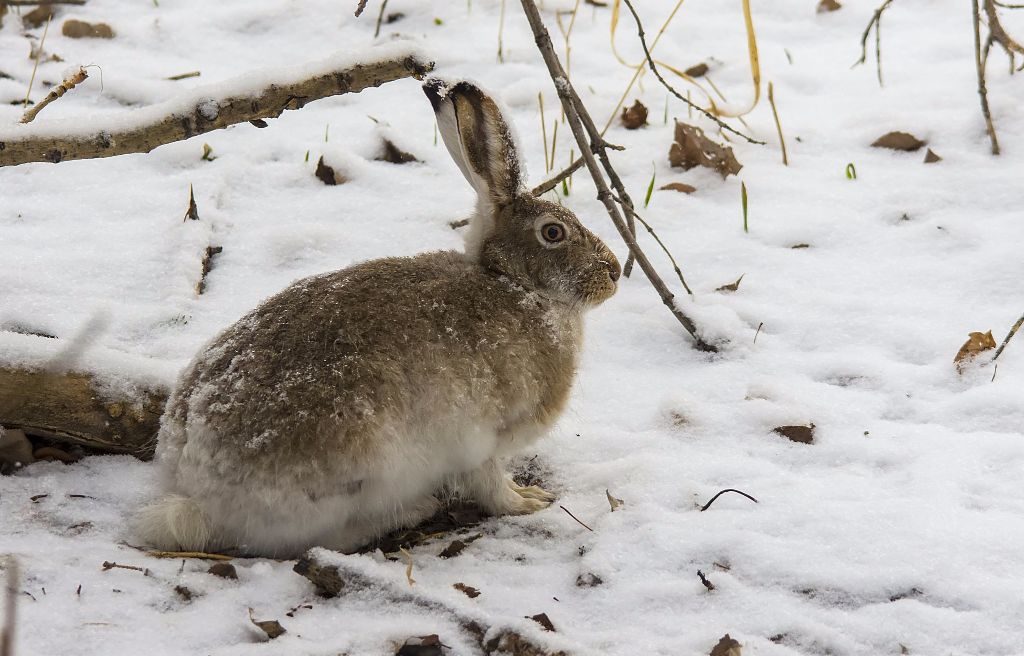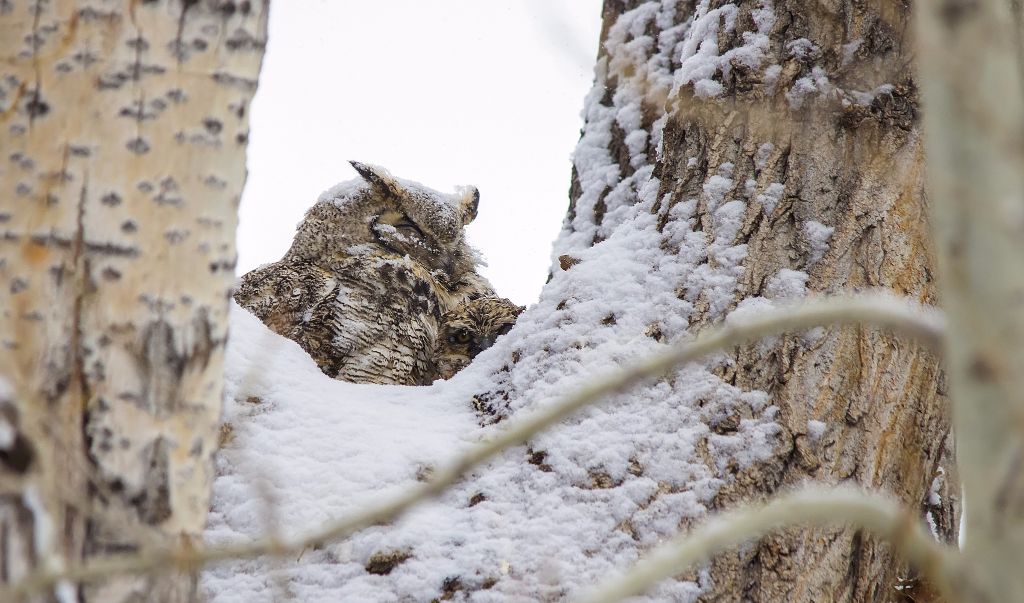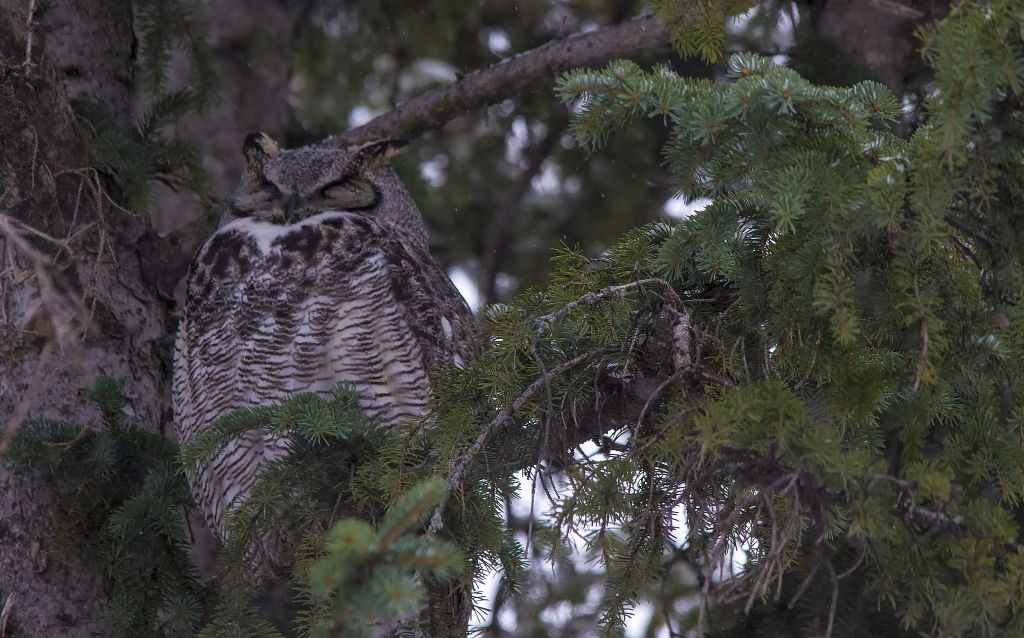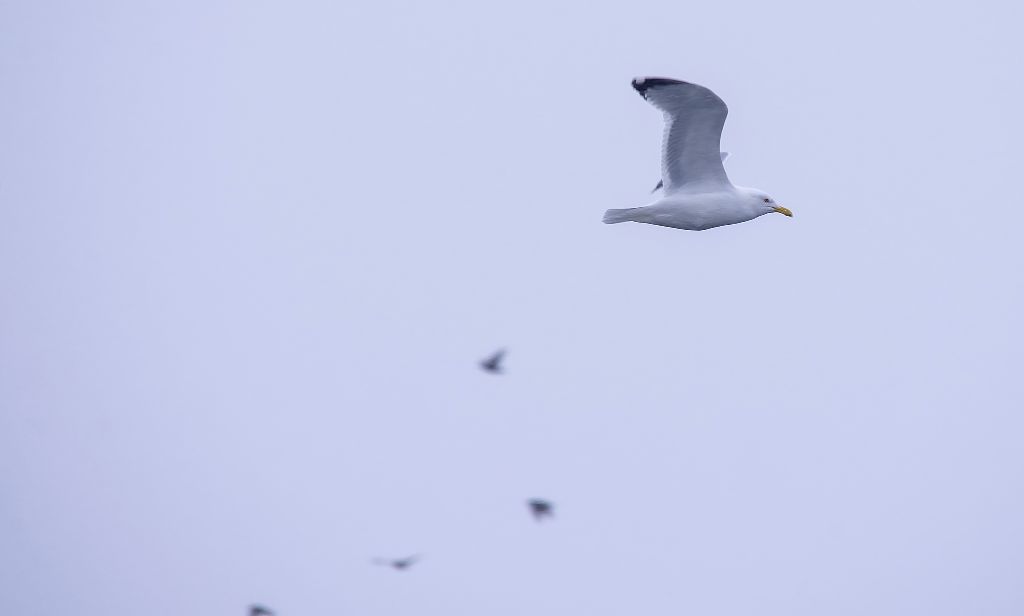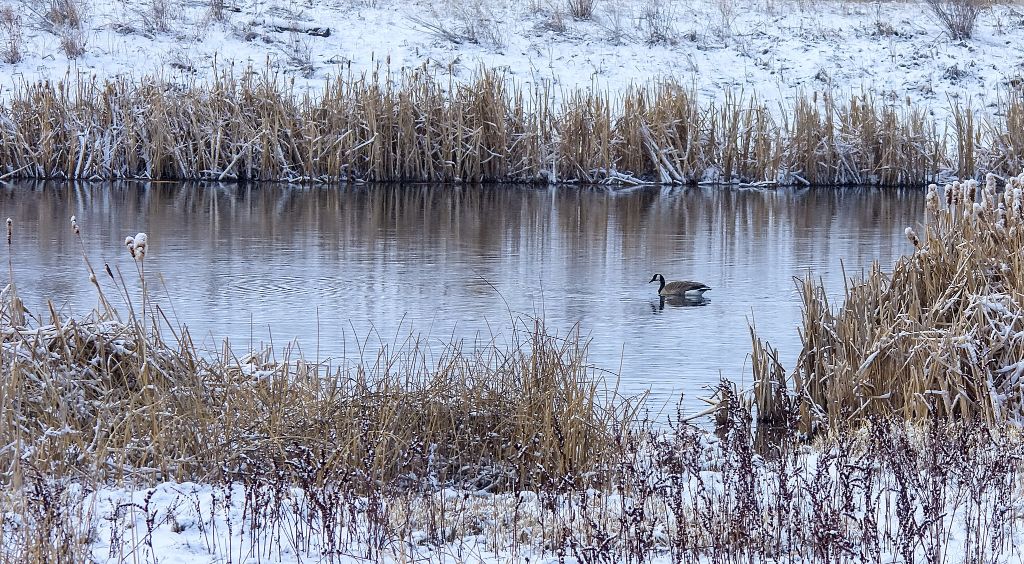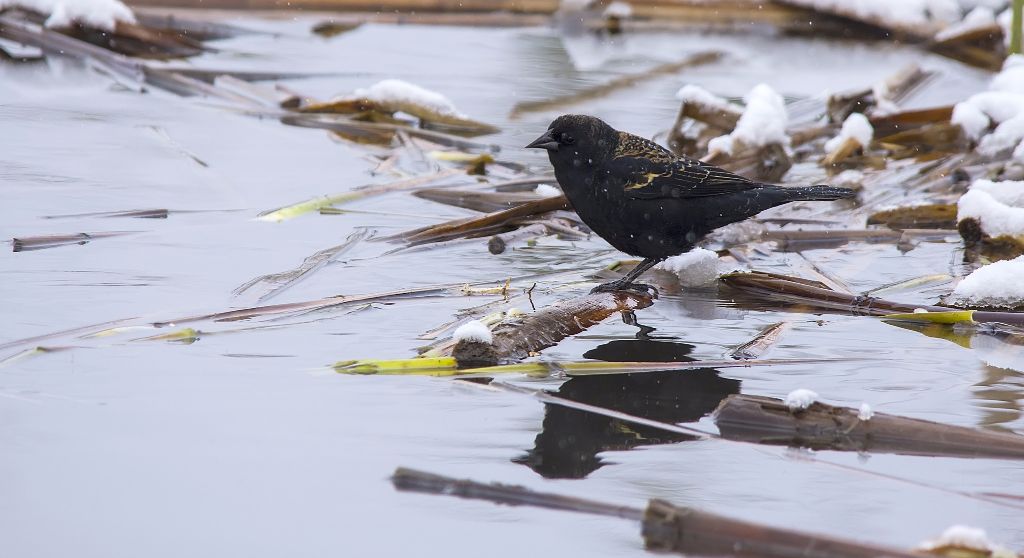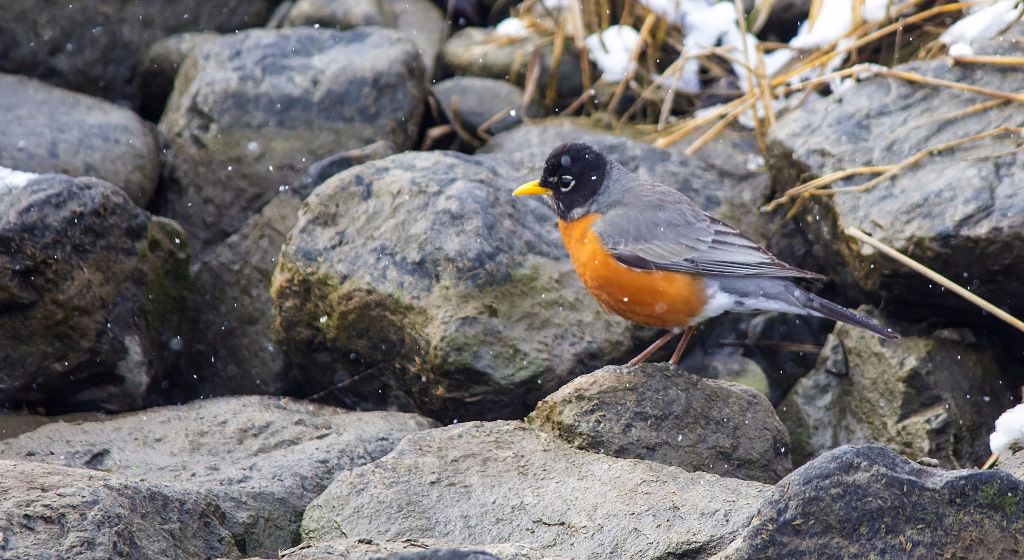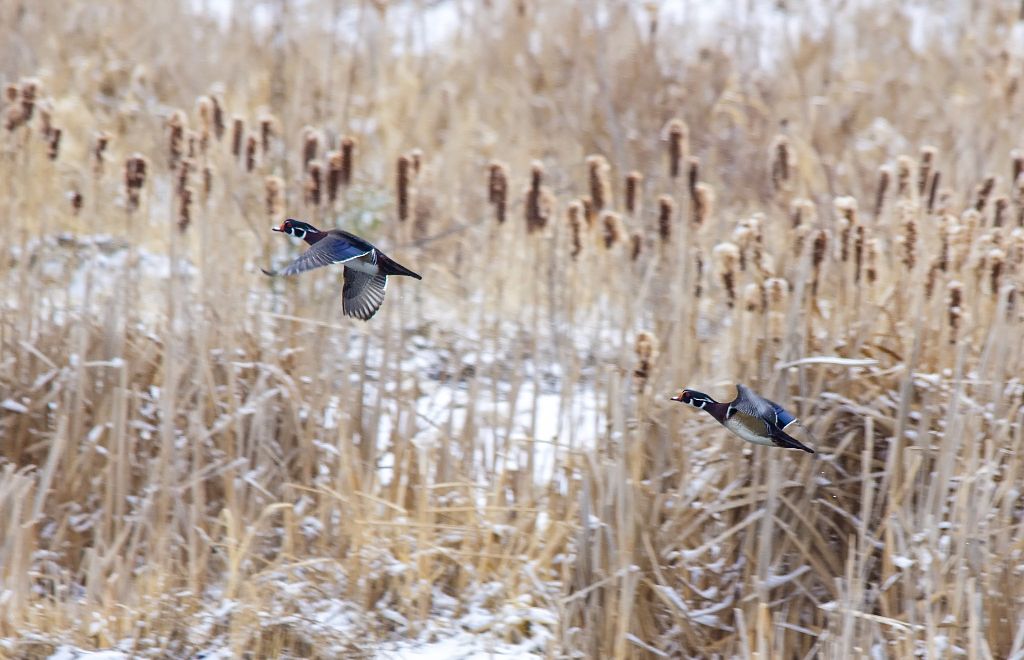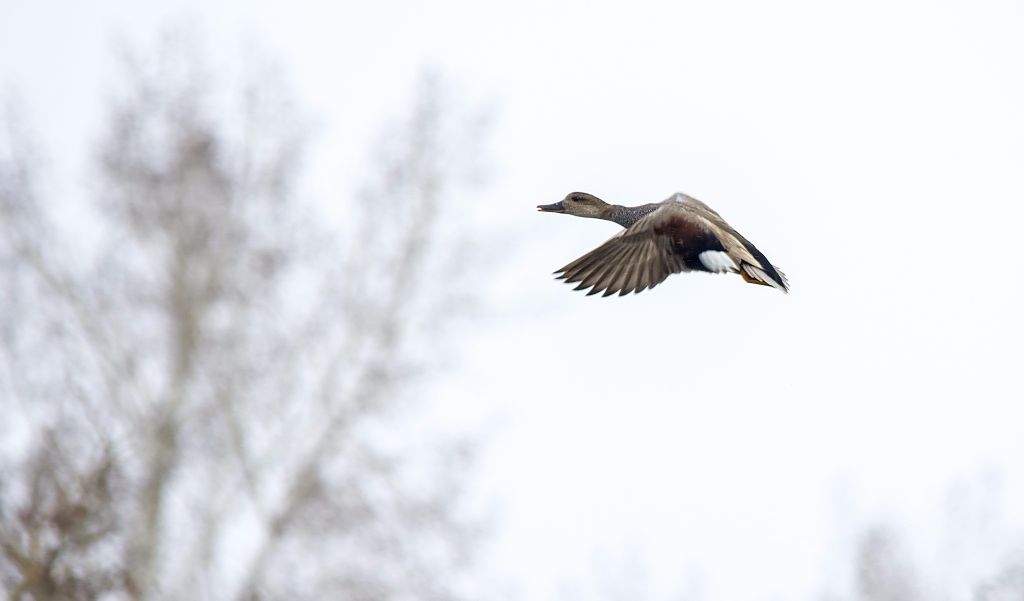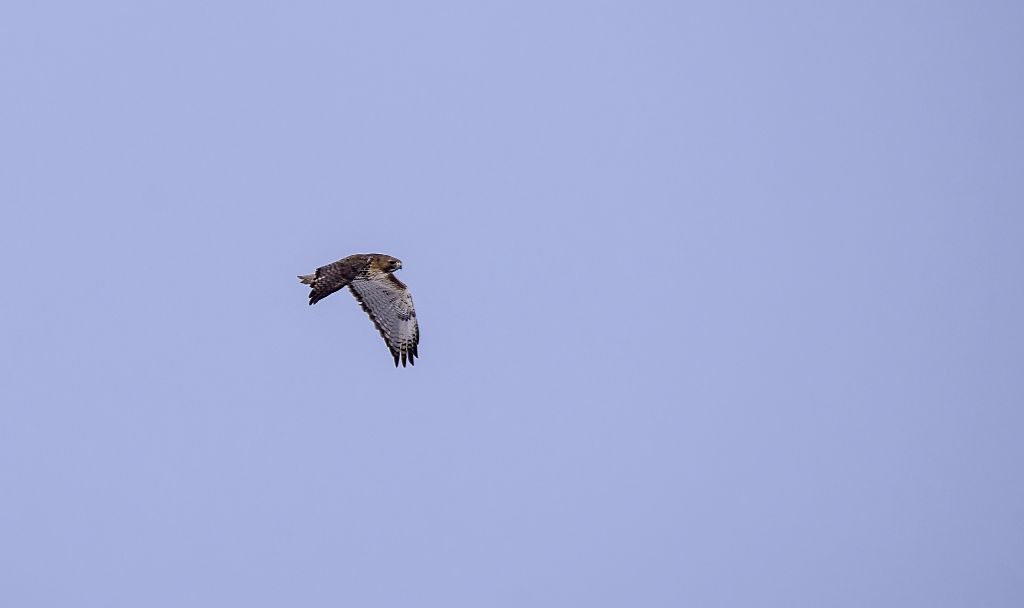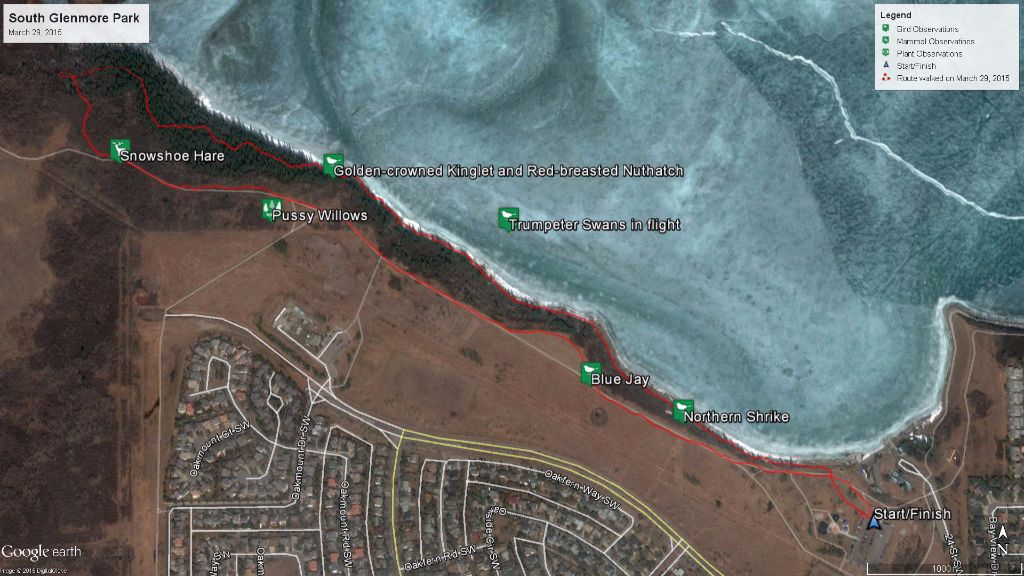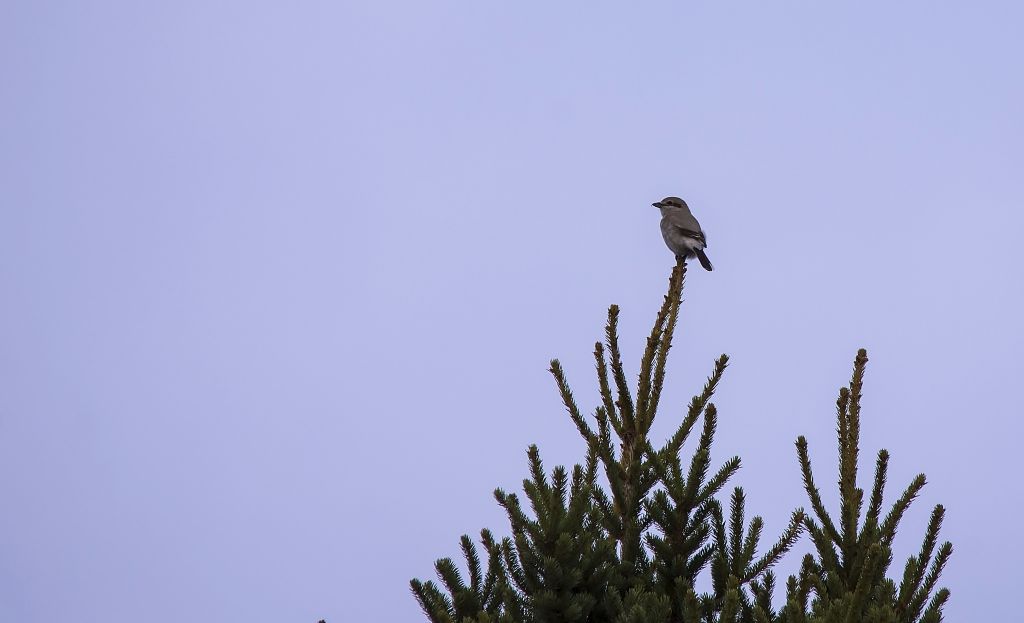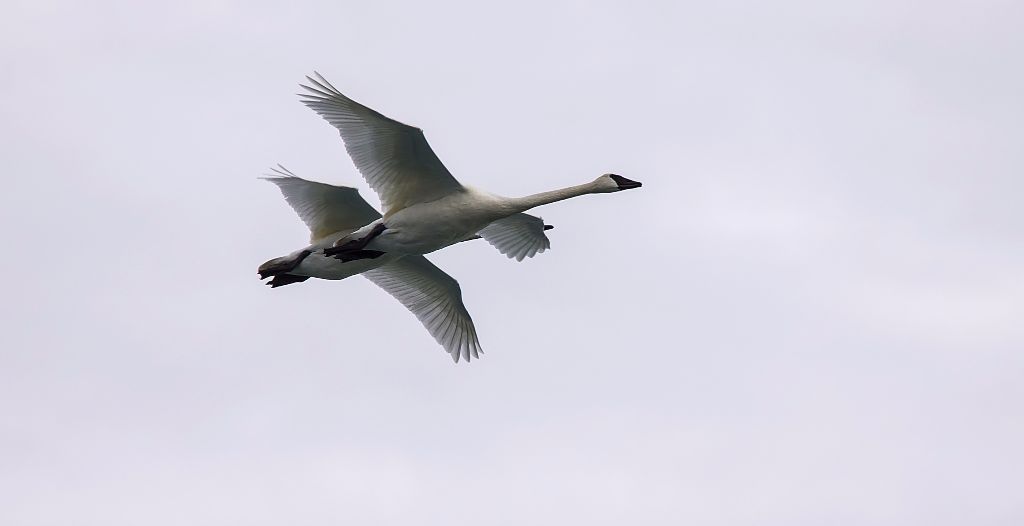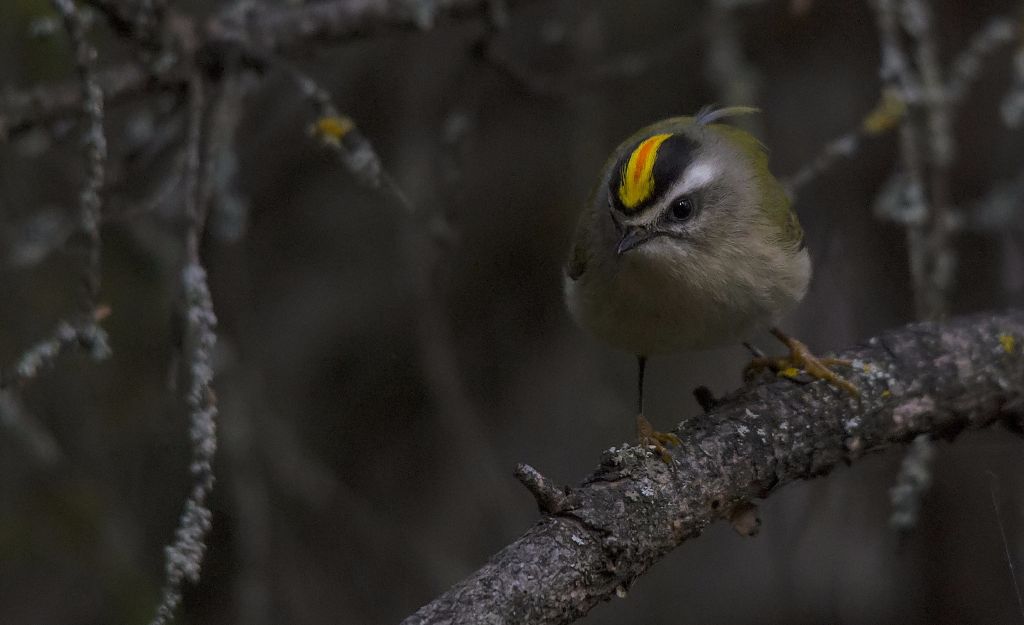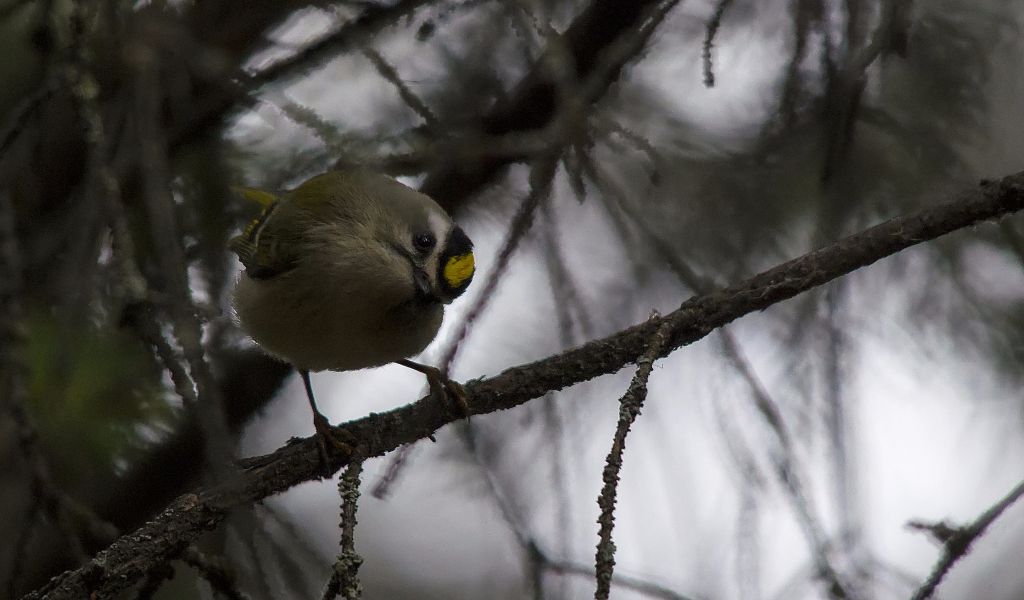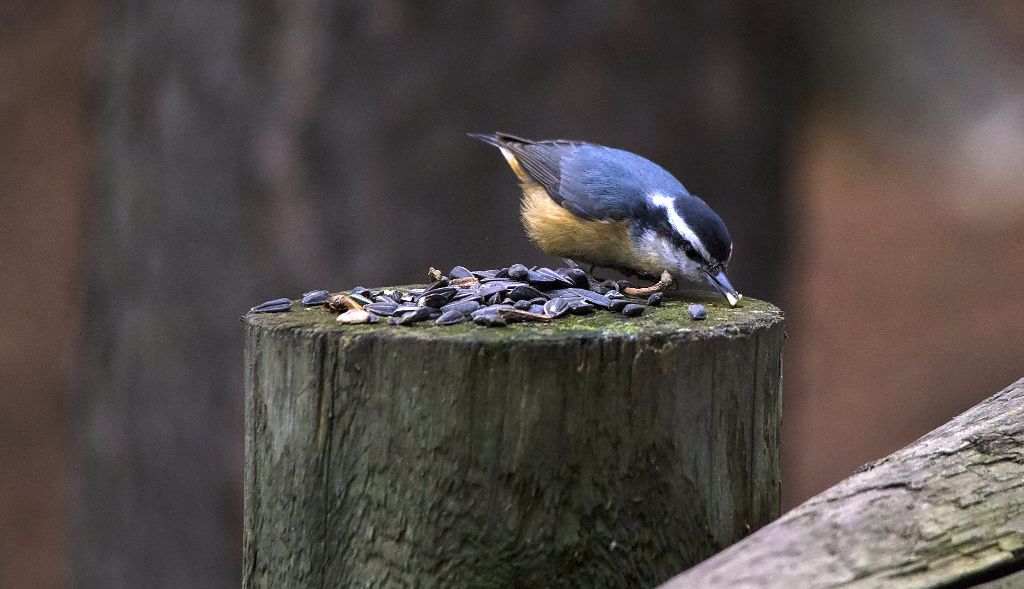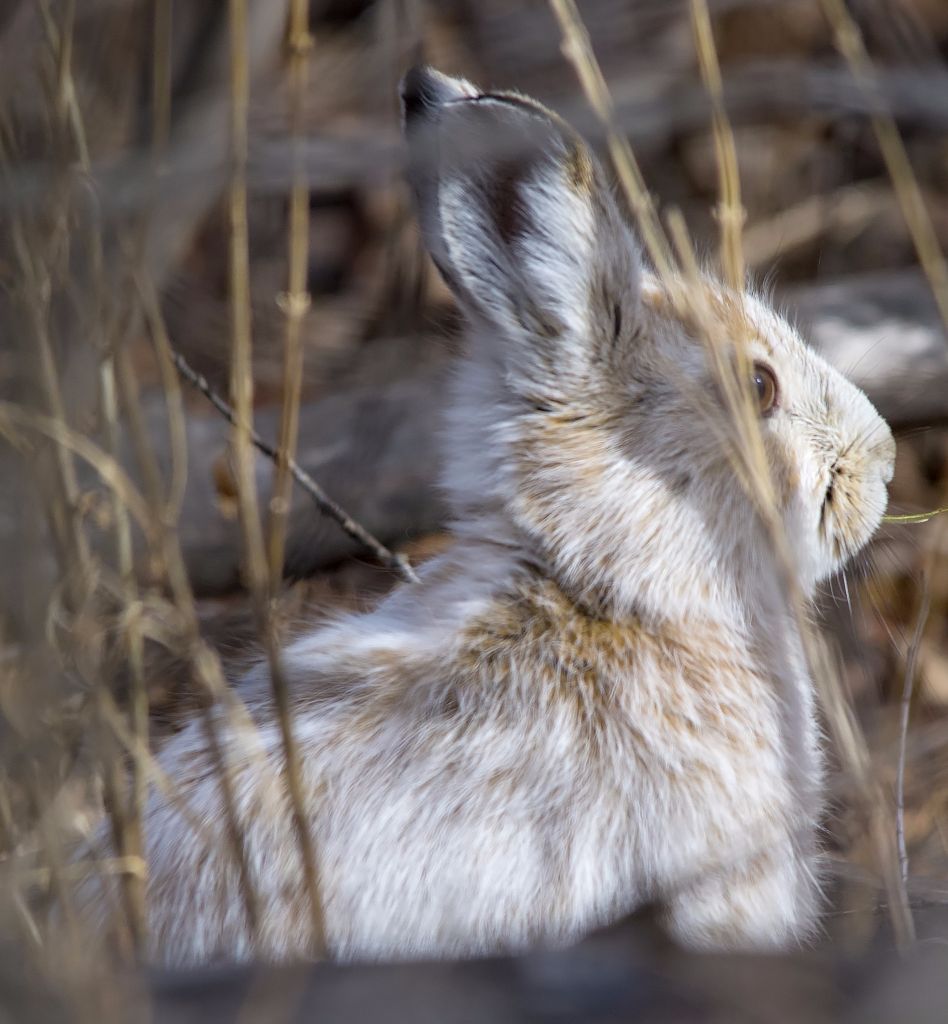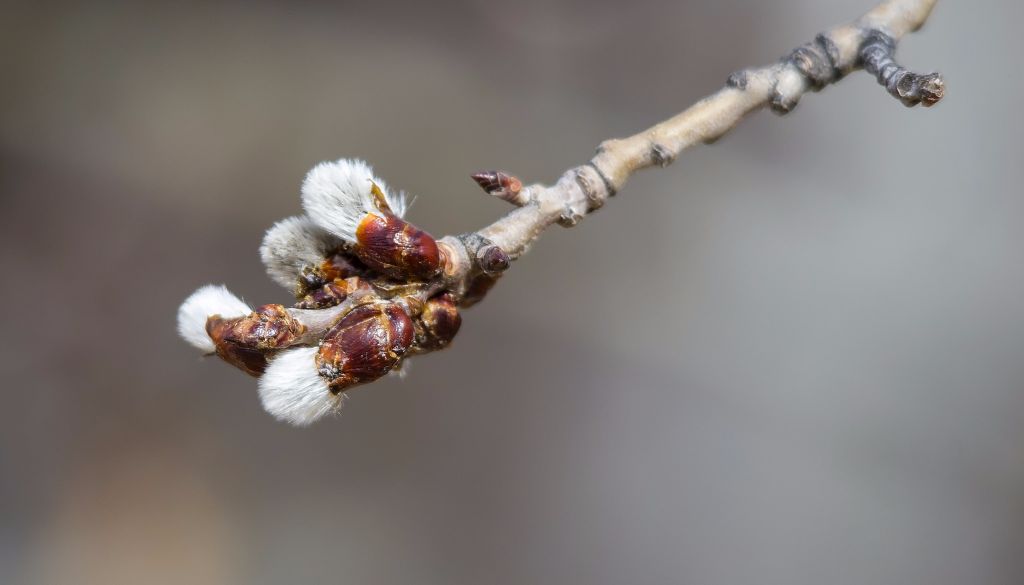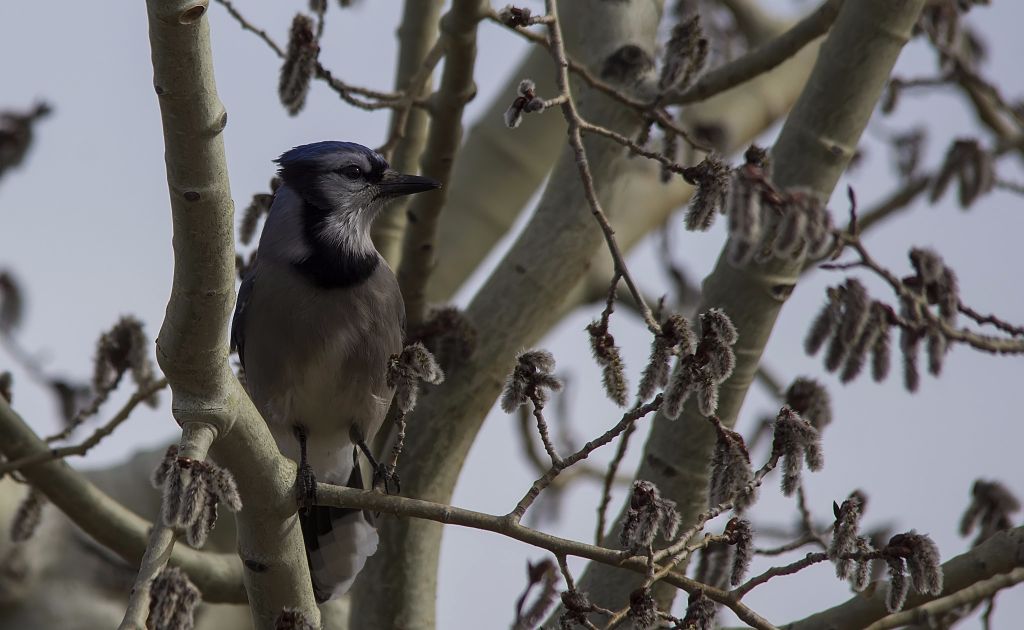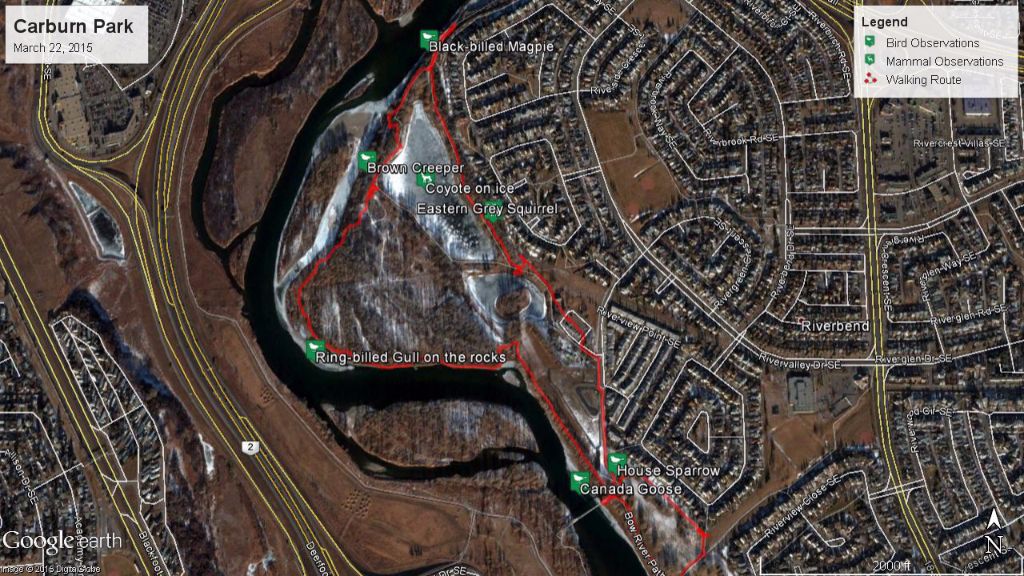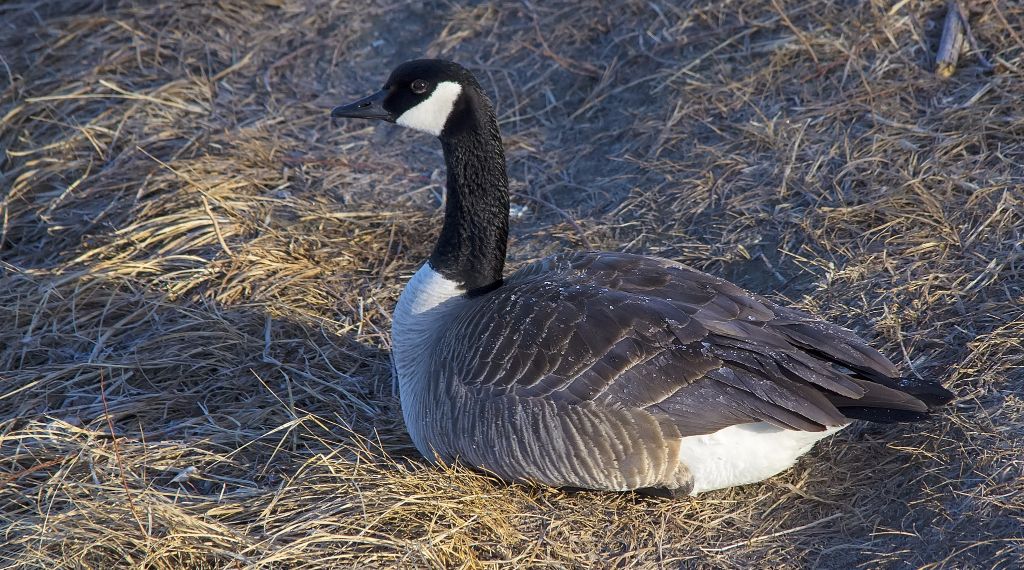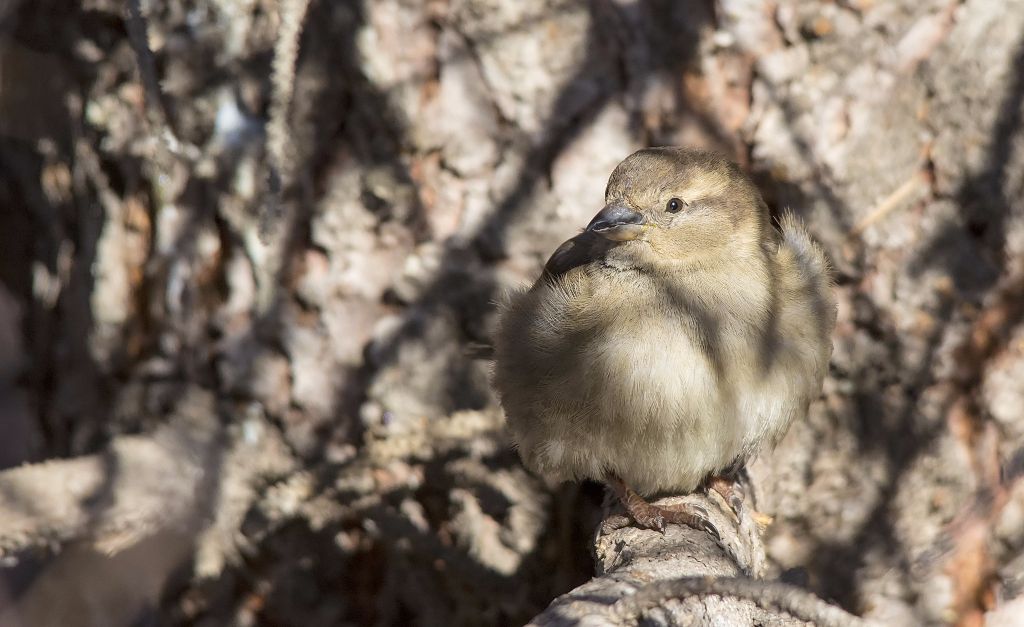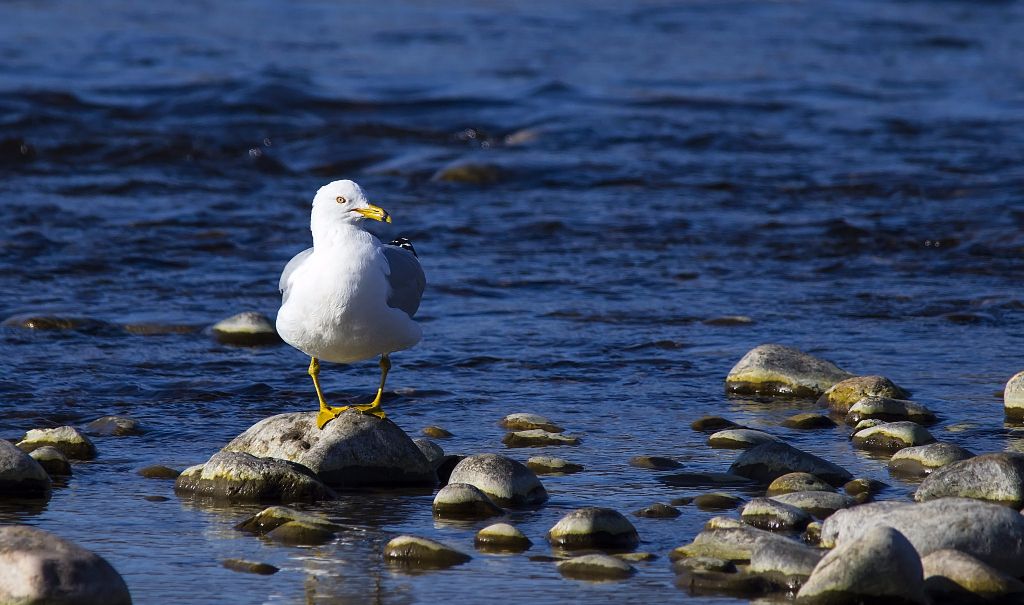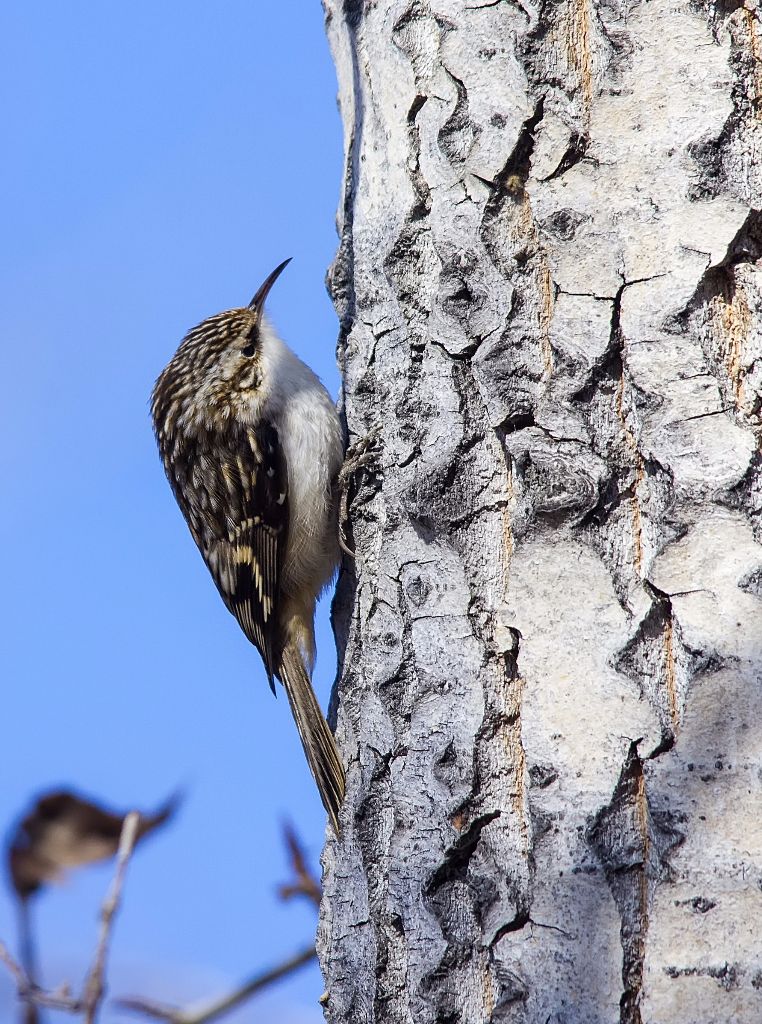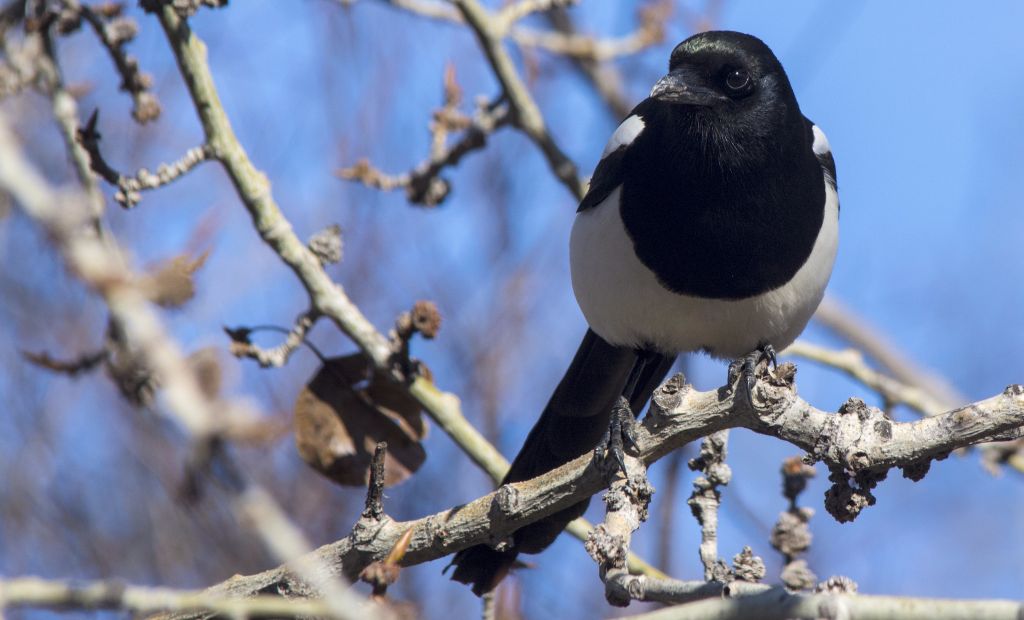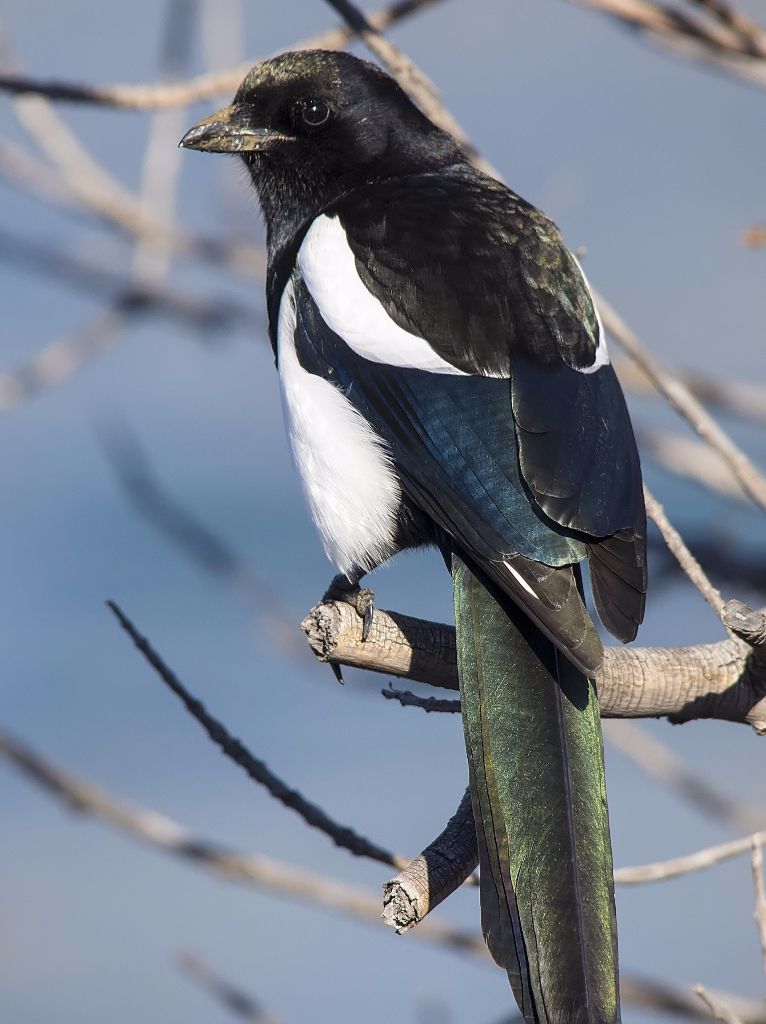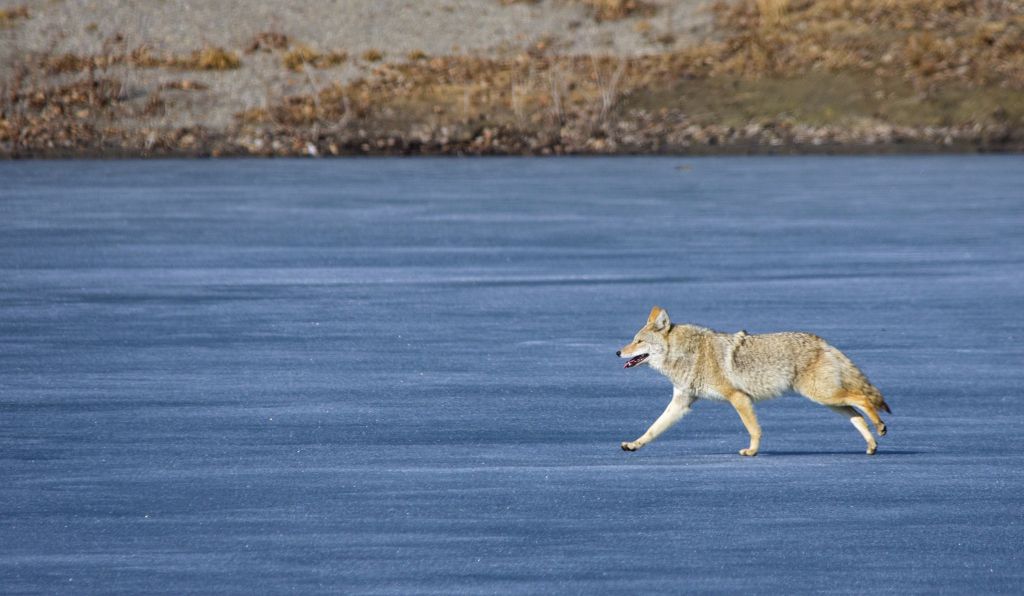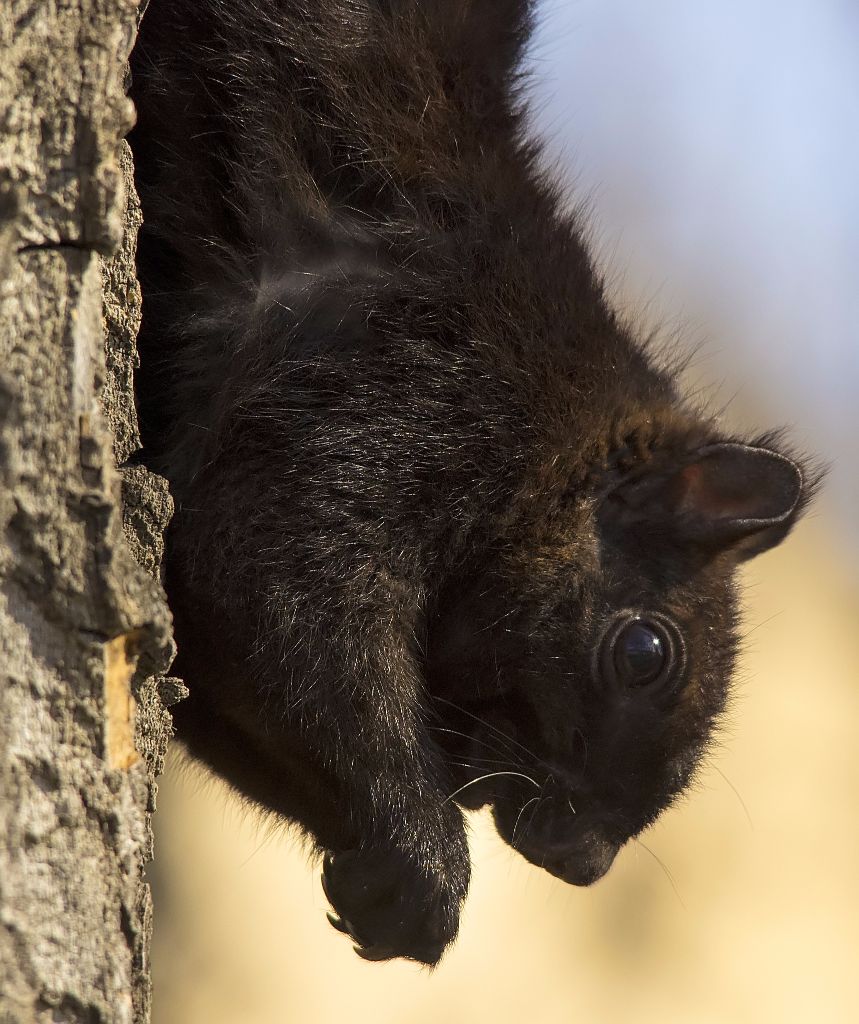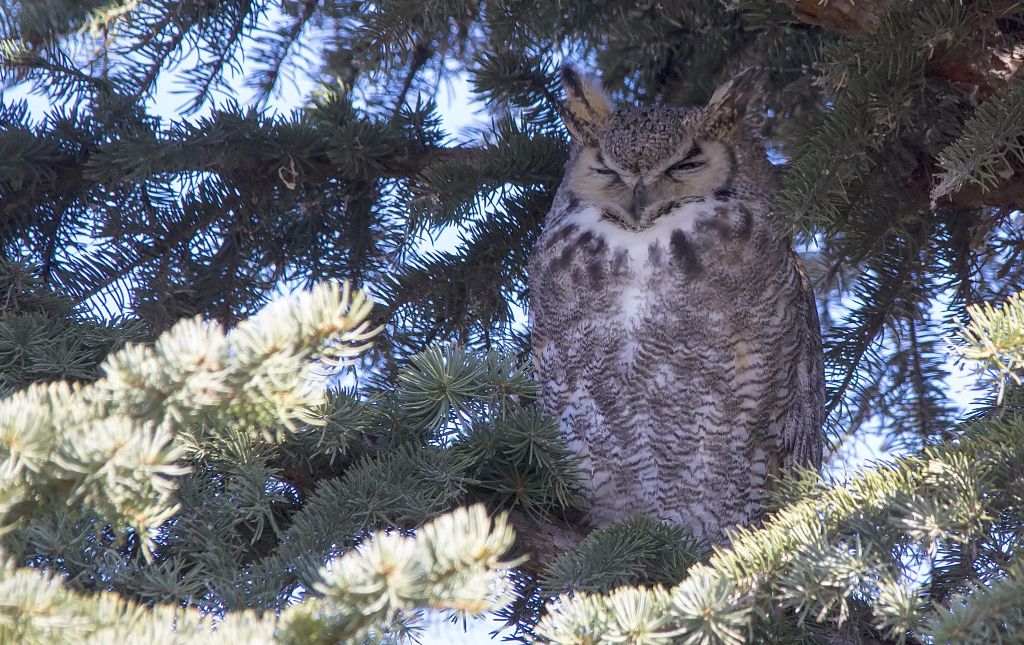Posted by Dan Arndt
For our last outing for our Friends of Fish Creek Winter Birding group, we headed to the Weaselhead and North Glenmore Park to see what winter birds remained, and if any spring migrants had shown up around the Glenmore Reservoir and in the Weaselhead itself. While many of our winter birds had already left, a few die-hards were still around in good numbers, and we definitely were not disappointed with the numbers of spring birds we found all around the park.
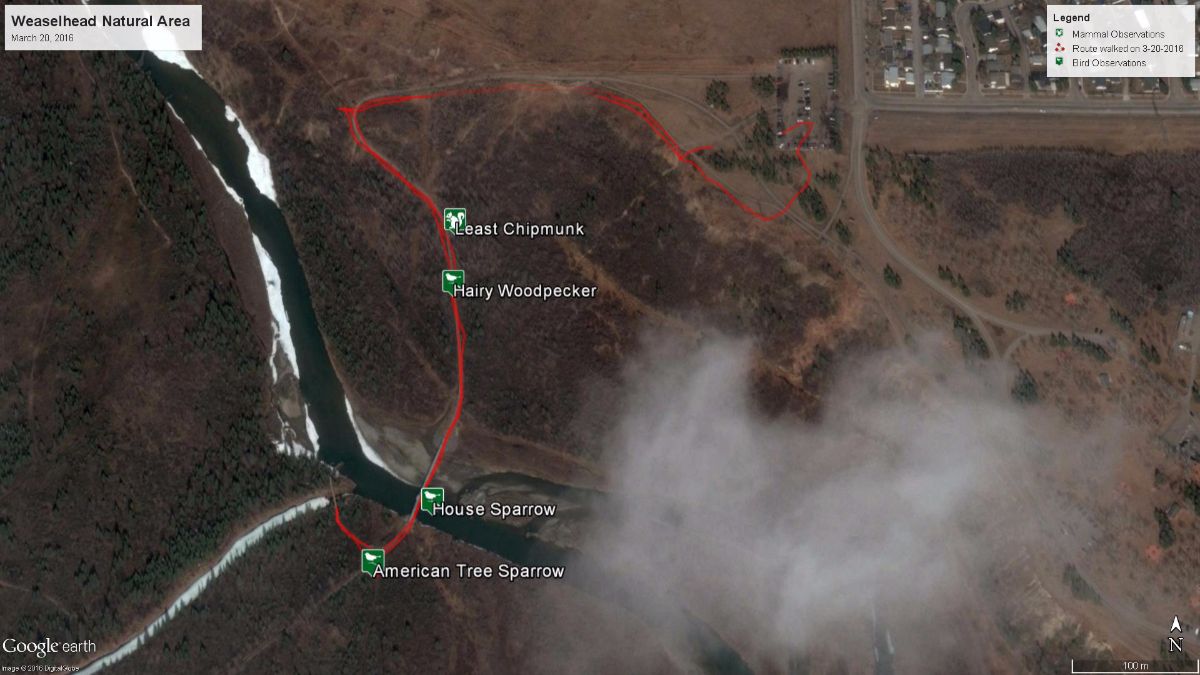
Weaselhead – March 20, 2016
We headed down into the Weaselhead first thing, checking the feeders along the way. I had headed down before our group to fill some of the feeders, and managed to spot an overwintering American Goldfinch, but when the rest of our group headed down as a whole all of the feeders were completely devoid of activity. Part of the reason for the vacancy is that now that the weather has turned, the birds were not quite as reliant on the feeders as insects had begun to hatch, and caches stored during the winter would provide plenty of food. We did have one little fellow who turned up, as always, at the tail end of the winter session.
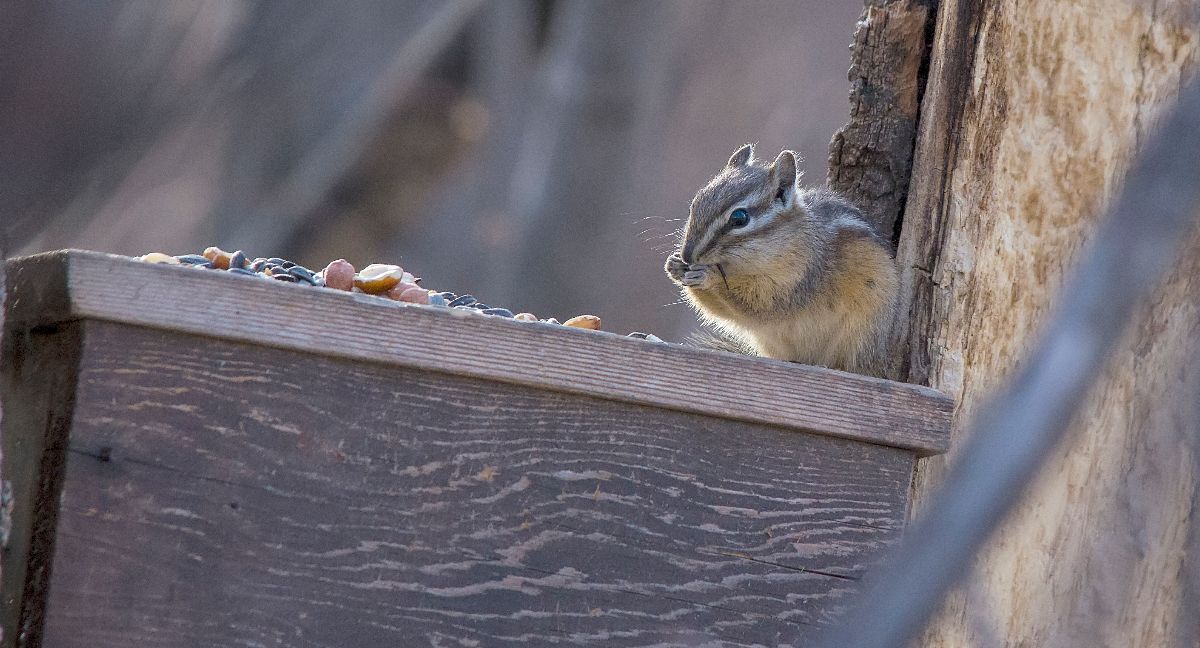
Least Chipmunk
[exif id=”15440″]
Fresh from his winter hibernation, this Least Chipmunk seemed completely oblivious to our presence as he stuffed his face full of black-oil sunflower, peanuts, and various other seeds I’d placed at the feeder earlier in the morning. I just love how much character these little mammals have, and how single-minded they can be when they first wake up.
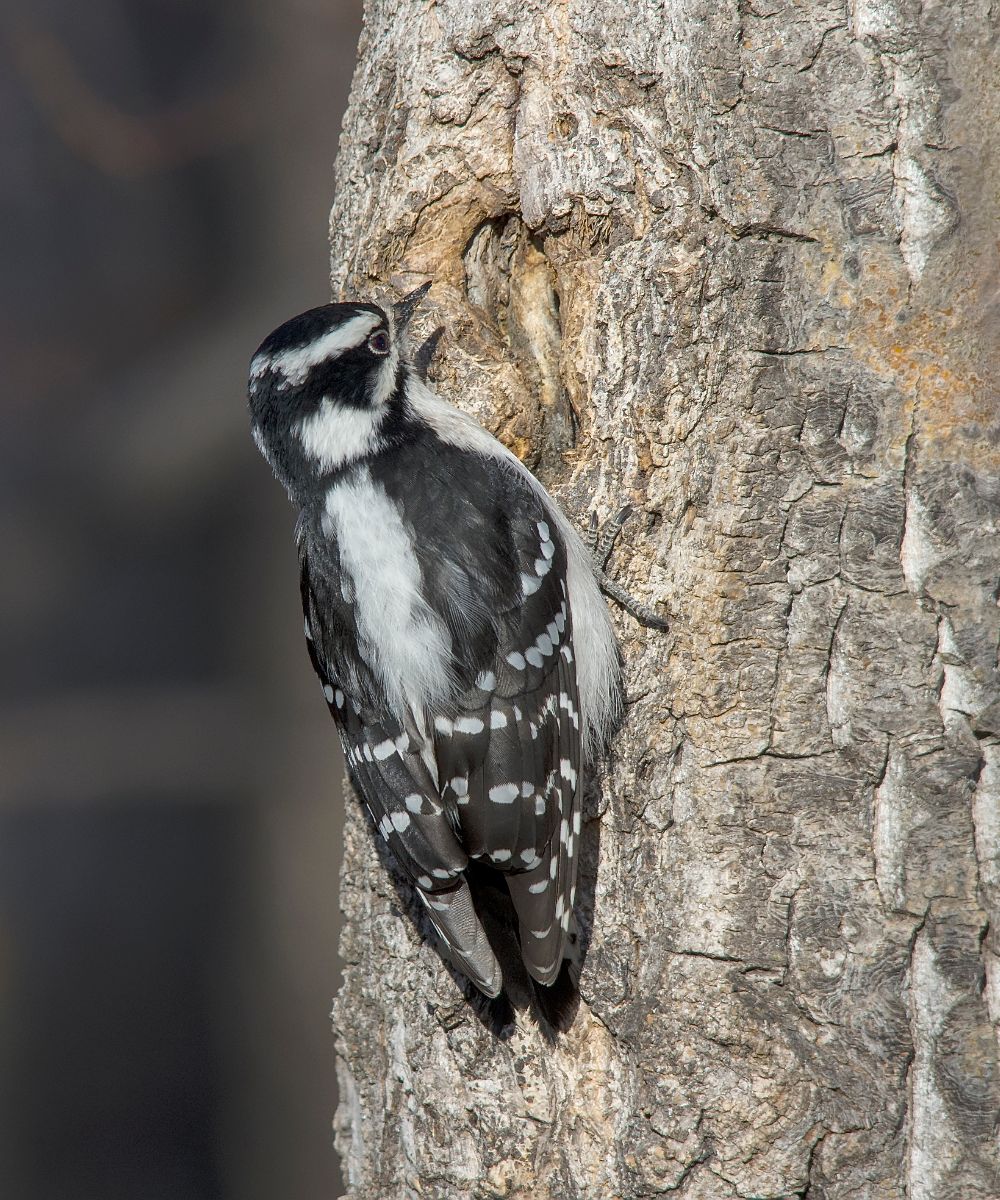
female Hairy Woodpecker
[exif id=”15441″]
While she wasn’t right at the feeder, this Hairy Woodpecker was hanging out nearby, hammering a hole in the side of this tree to pick out a tasty meal.
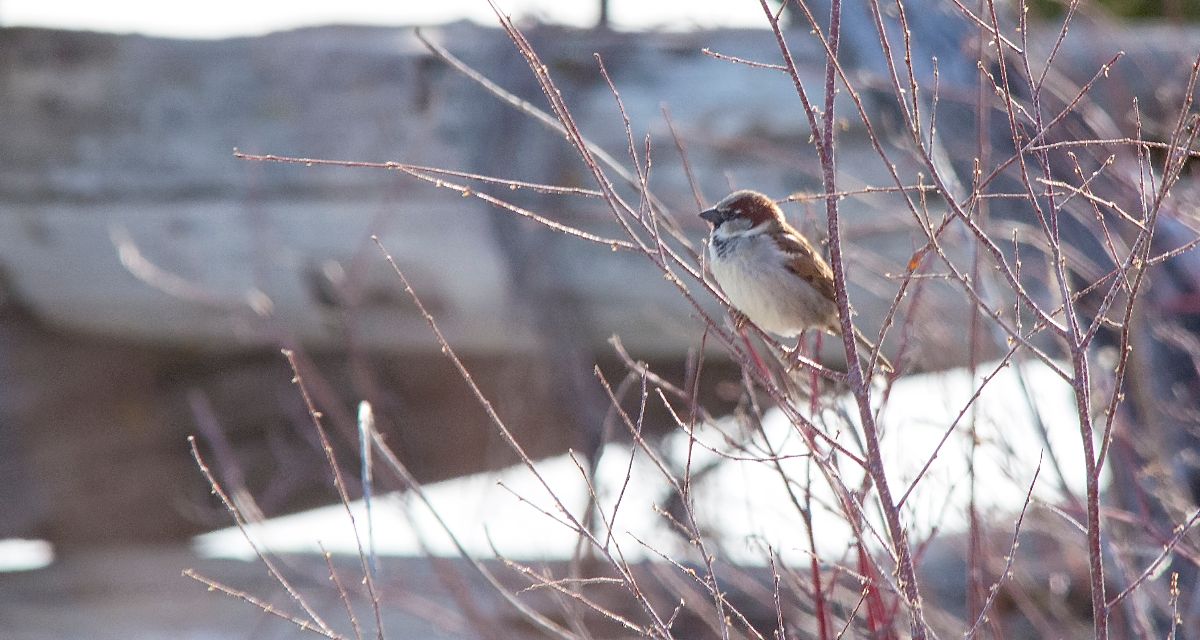
male House Sparrow
[exif id=”15442″]
A little further down the path and across the bridge we found this male House Sparrow and his mate picking out some twigs, grass and leaves to make their nest for the coming season. Given where they were loafing about, they may have even been considering setting up shop in one of the Cliff Swallow nests on the bridge!
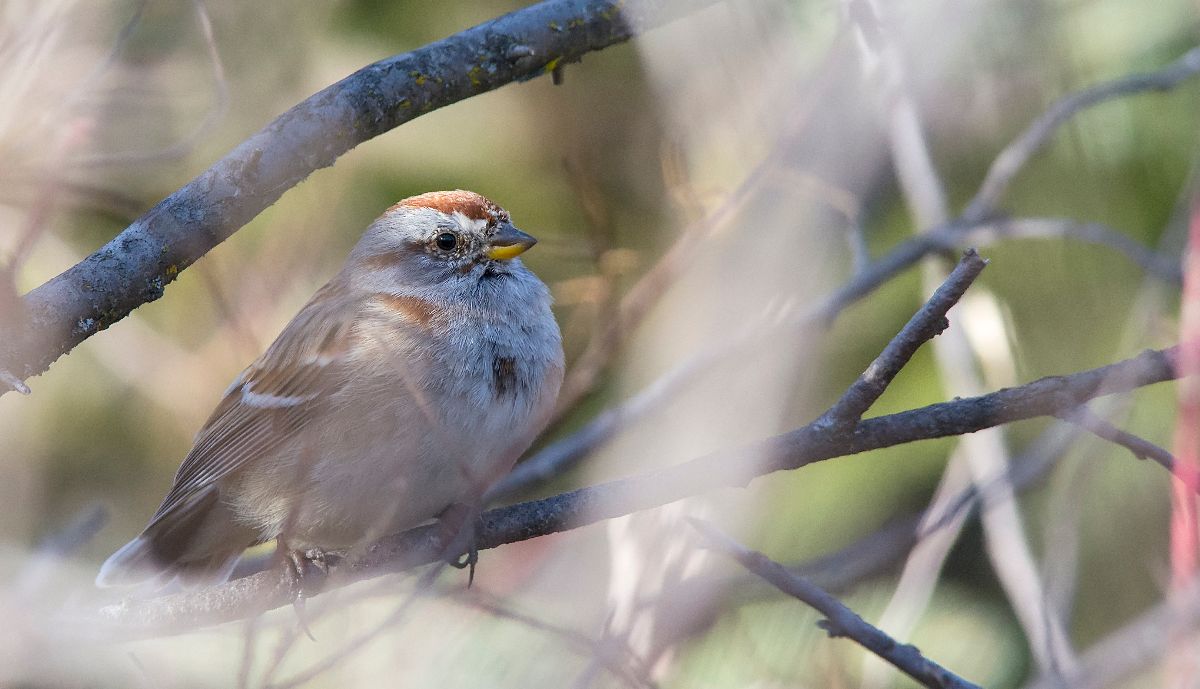
American Tree Sparrow
[exif id=”15443″]
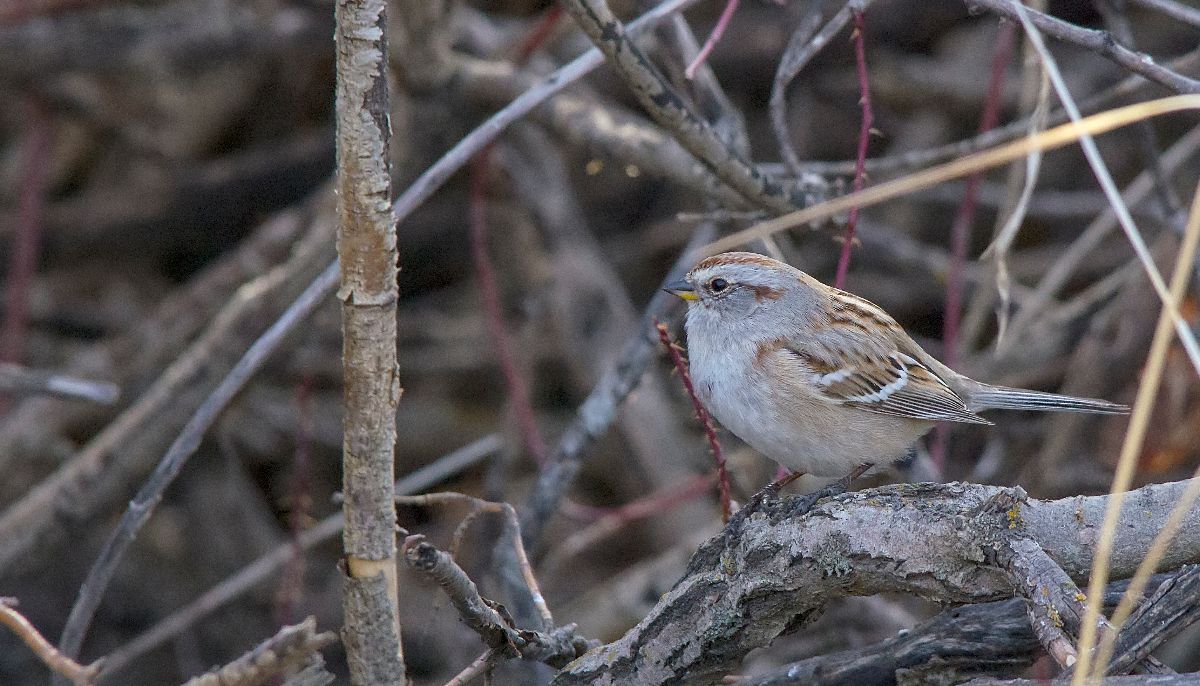
American Tree Sparrow
[exif id=”15444″]
Before we turned around to head back up the hill, we stopped and checked the logs and information signs that have been used all winter as a feeding station, and sure enough we found some American Tree Sparrows singing away in the brush, and coming out to feed. These little sparrows have an amazing song, and are just as striking to look at.
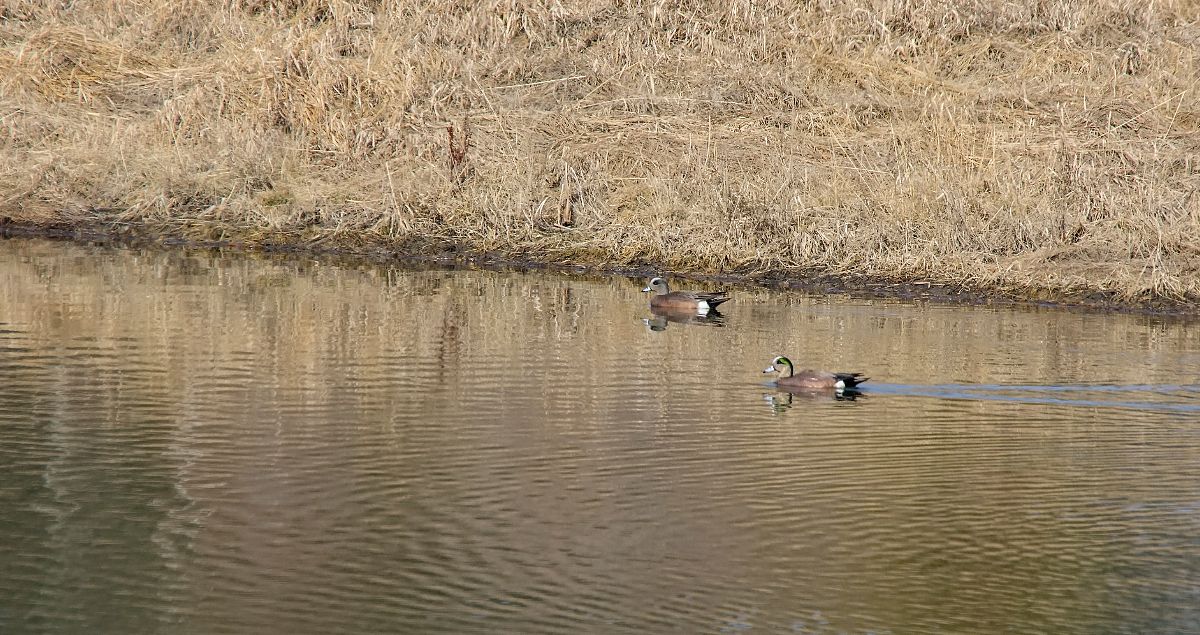
American Wigeon
[exif id=”15445″]
We headed back up the hill and off to the east end of the Glenmore Reservoir to find our returning migrants, and were not disappointed on the first pond. A pair of American Wigeon were floating along the back end of the pond, well away from the Canada Geese and Mallards who were clearly set up on their nesting territories closer in.
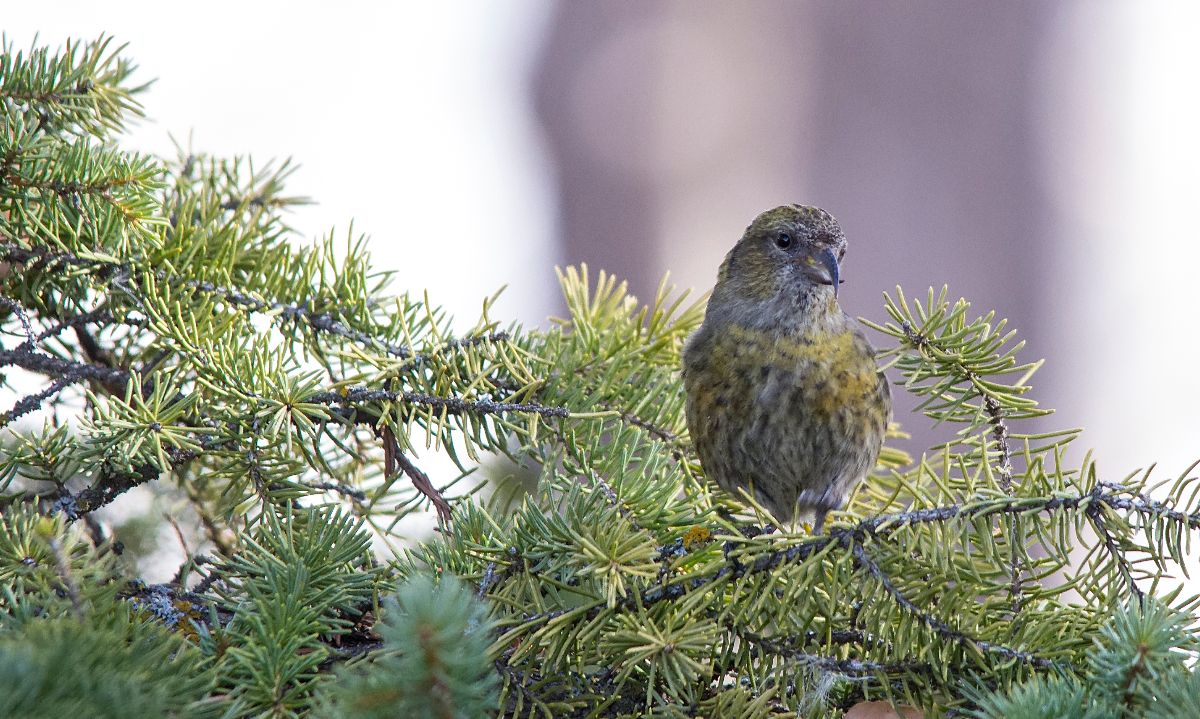
immature White-winged Crossbill
[exif id=”15446″]
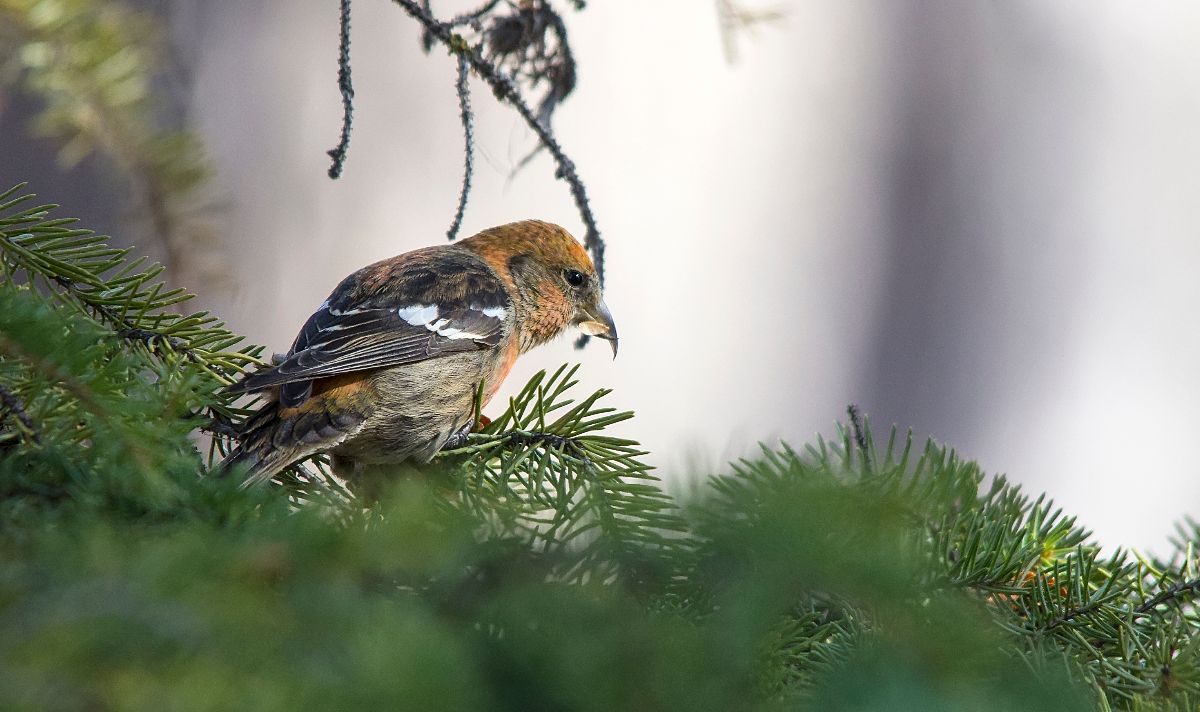
immature White-winged Crossbill
[exif id=”15447″]
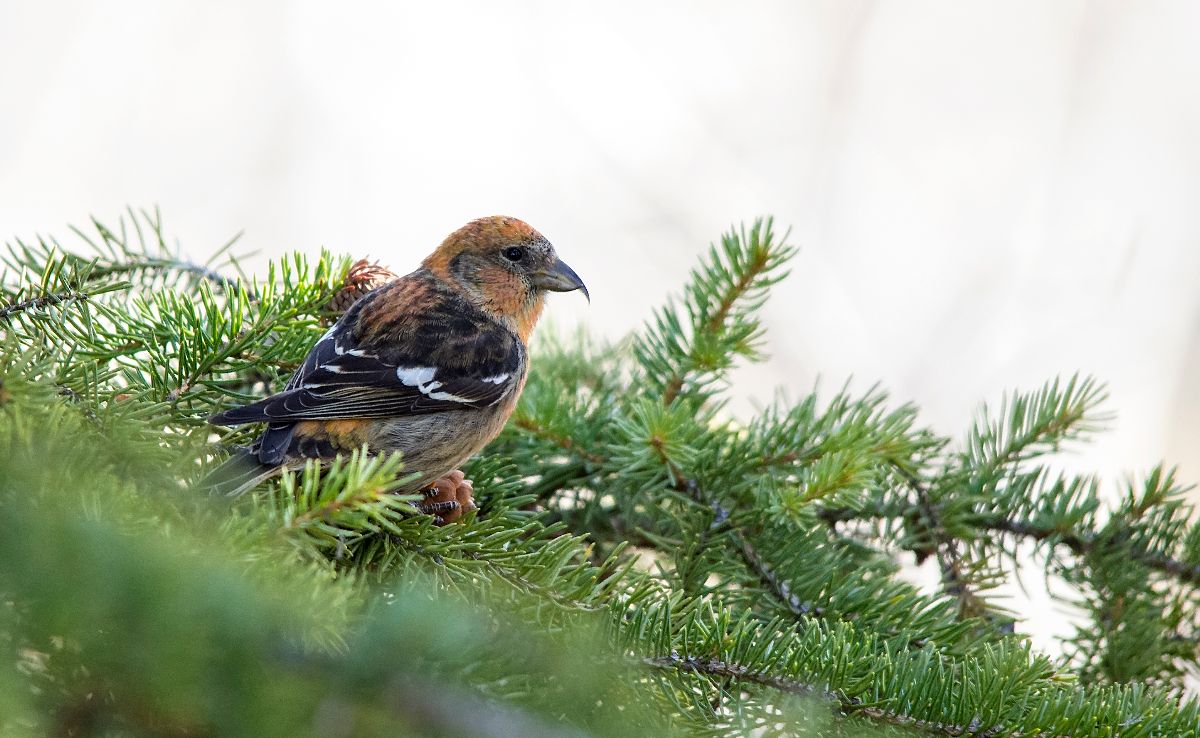
immature male White-winged Crossbill
[exif id=”15448″]
While we were scanning the ponds for waterfowl, sparrows, and anything else we could find, we heard a flock of late White-winged Crossbills in the spruce trees to the north, picking through the few remaining cones that had made it through the winter. Both males and females were in fine form, with the majority of the birds being immature, and as always, seemed to be completely oblivious to our presence.
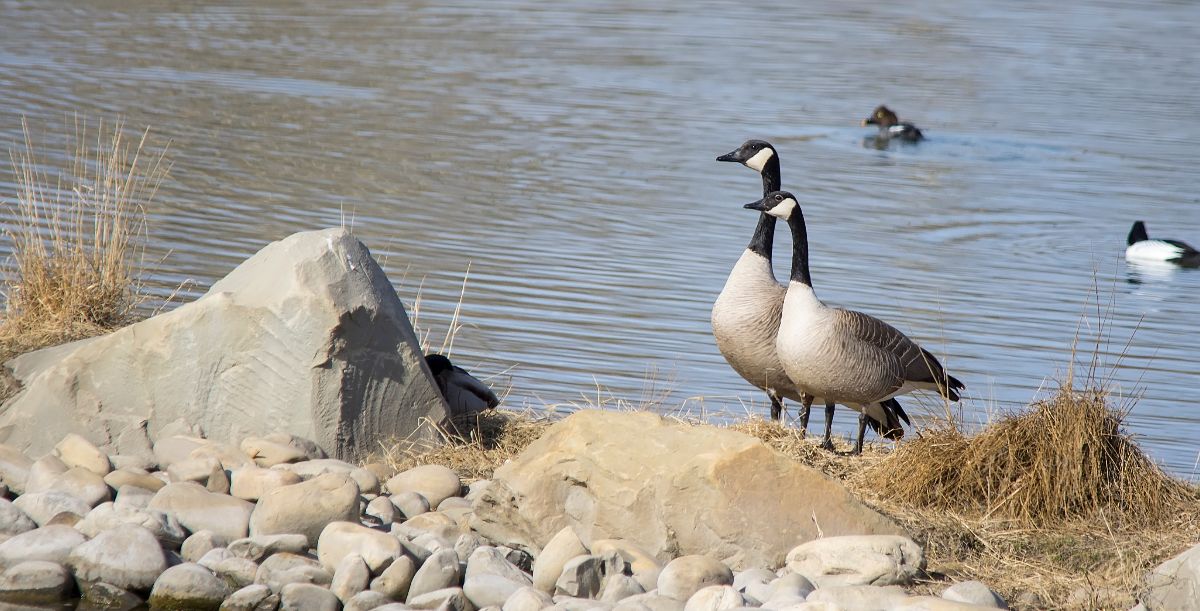
Canada Geese harassing some Mallards
[exif id=”15449″]
These Canada Geese seemed to have their feathers ruffled by the Mallards (in the shade of the rock on the left). It wasn’t until the Mallards had simply had enough and moved on that the geese left them alone. Seeing these inter-species interactions is always a treat, and late winter and early spring can lead to some great opportunities for this behaviour.
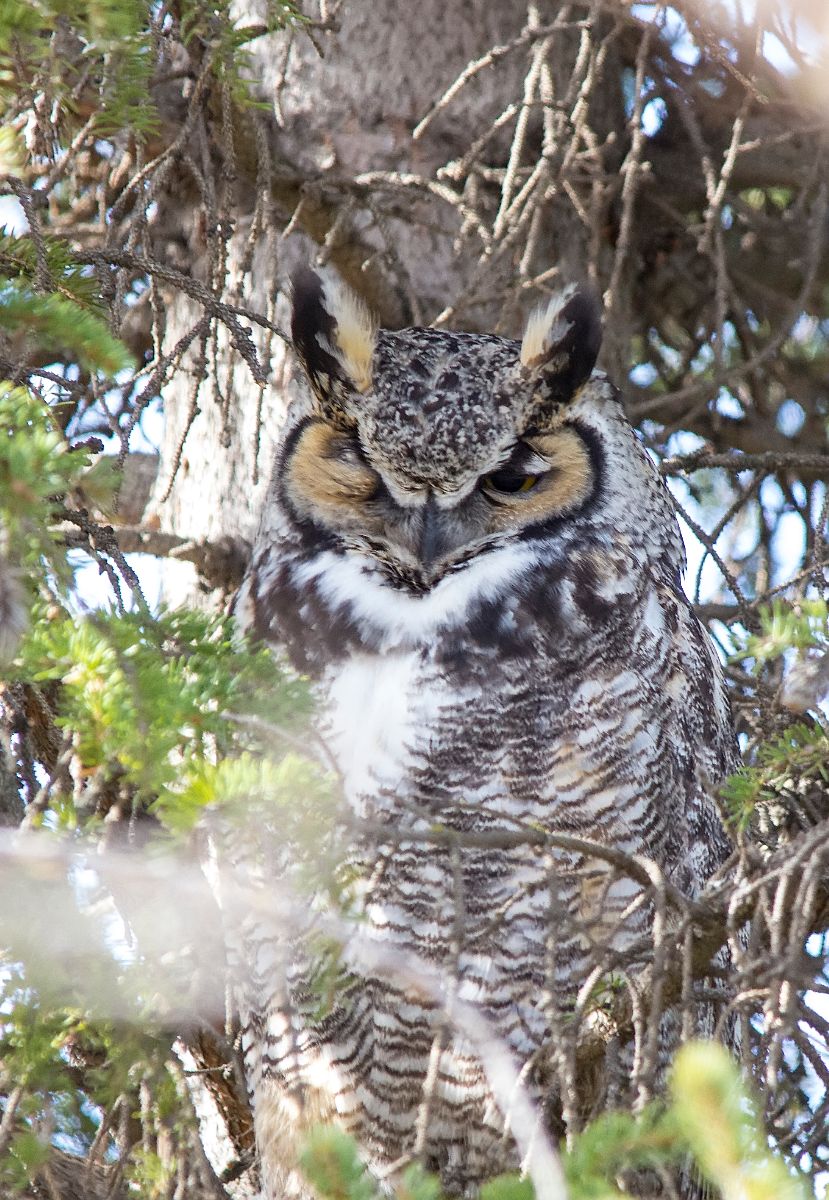
Great Horned Owl
[exif id=”15450″]
Our best surprise of the day was coming across this male Great Horned Owl high up in a spruce trying to have a nap… until we disturbed him. He wasn’t pleased to see us. At all.
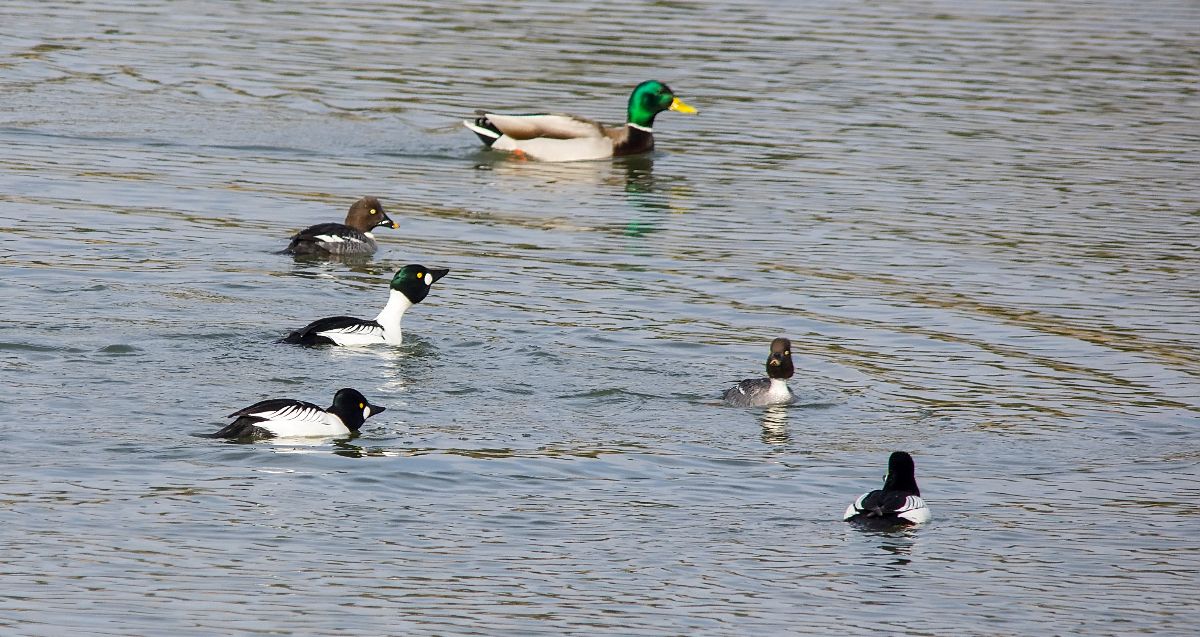
Common Goldeneye
[exif id=”15452″]
These Common Goldeneye (and a very confused Mallard) were still trying to display for the few remaining single females, though most others of their kind we’d found this late in the winter/spring season. Despite that, at least two of them seemed to making a positive impression!
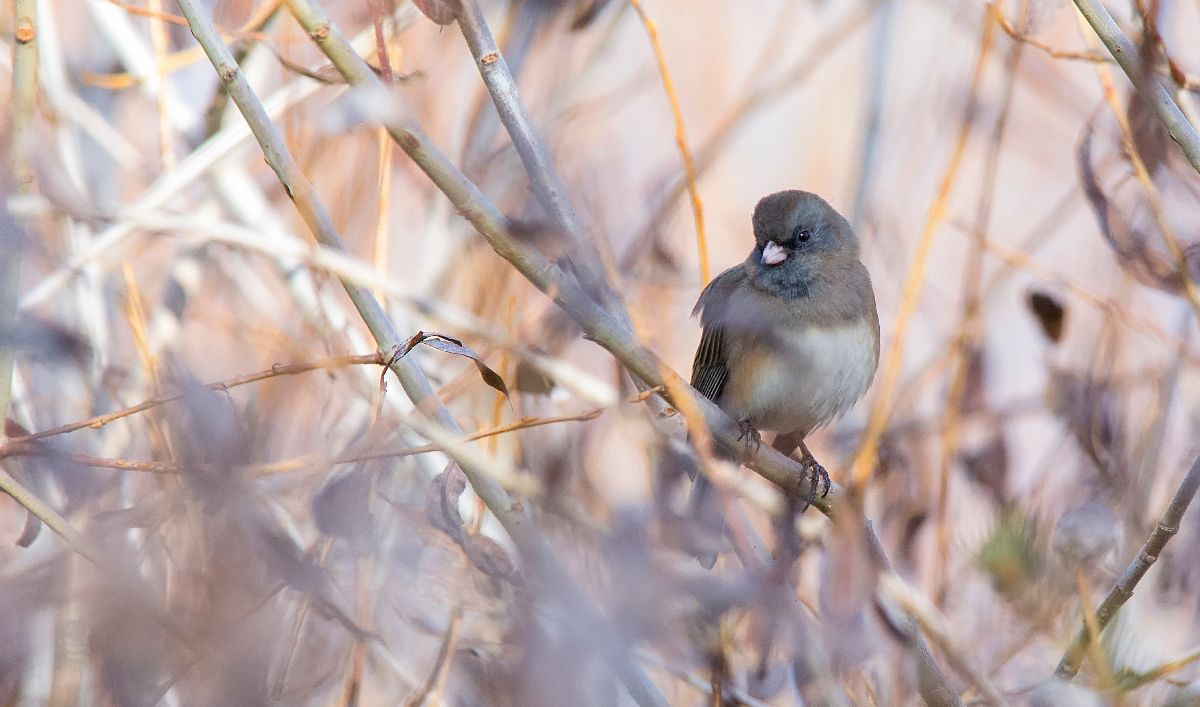
Dark-eyed Junco (Oregon)
[exif id=”15453″]
One of our last birds of the day, and a great one at that, was this Dark-eyed Junco of the Oregon subspecies that sang a bit for us, but also perched high up in the nearby bushes and allowed everyone very good looks.
The spring course with the Friends of Fish Creek is now well under way, so expect some new posts in the next few weeks from our more recent outings. Have a great week, and good birding!





